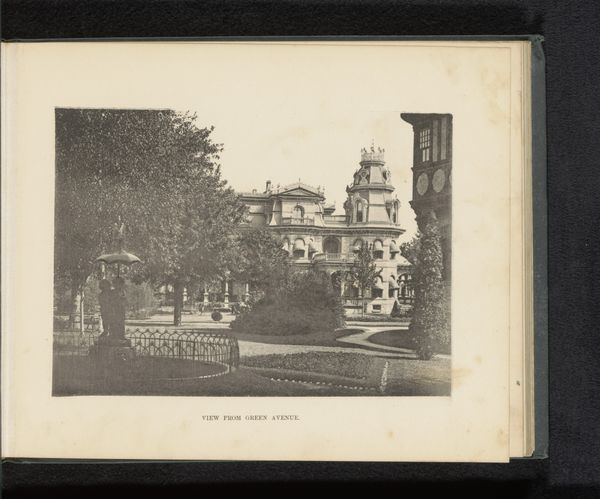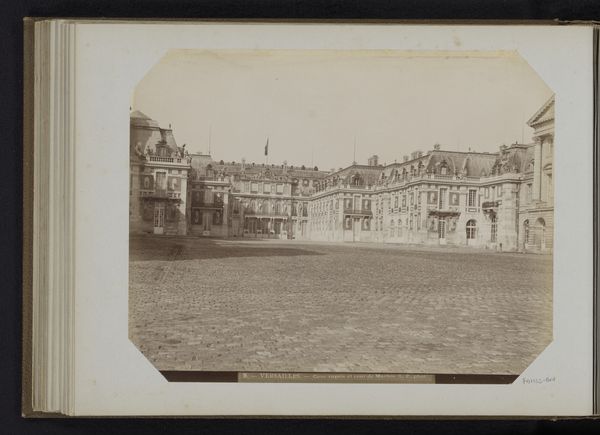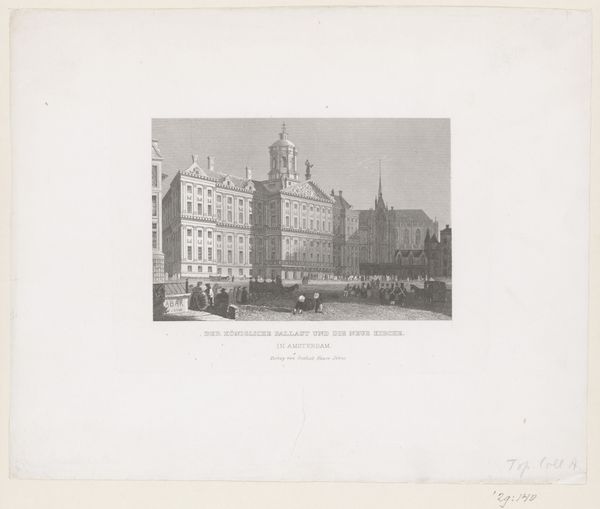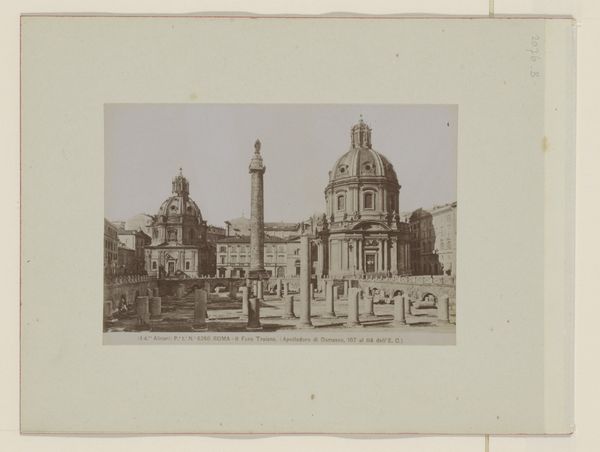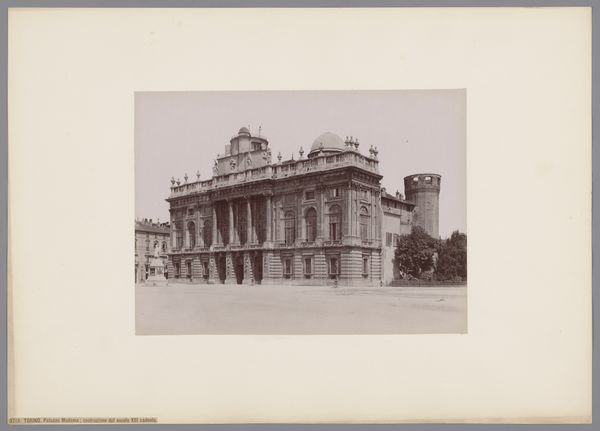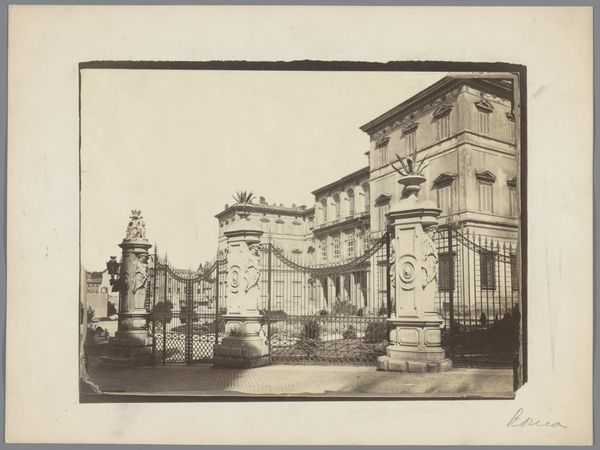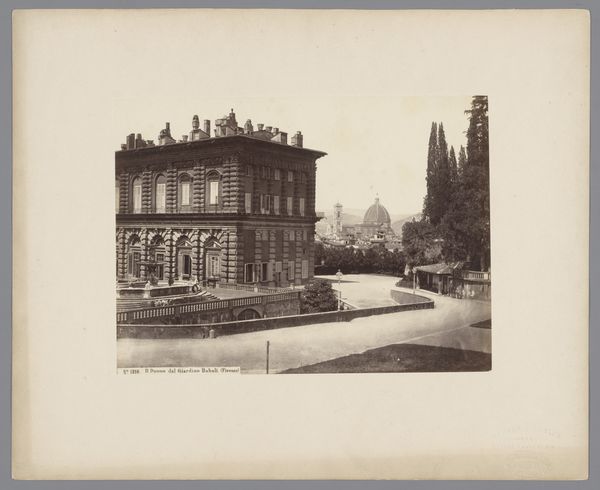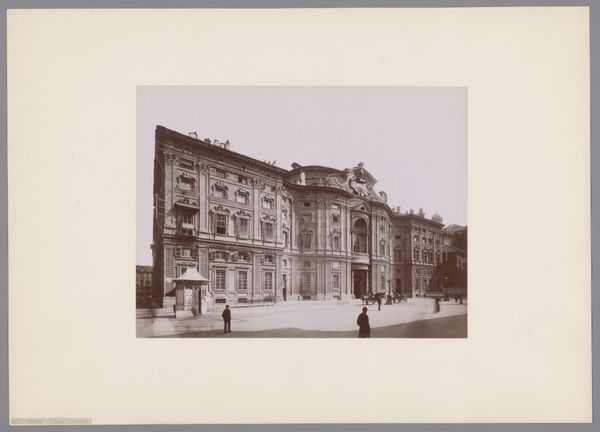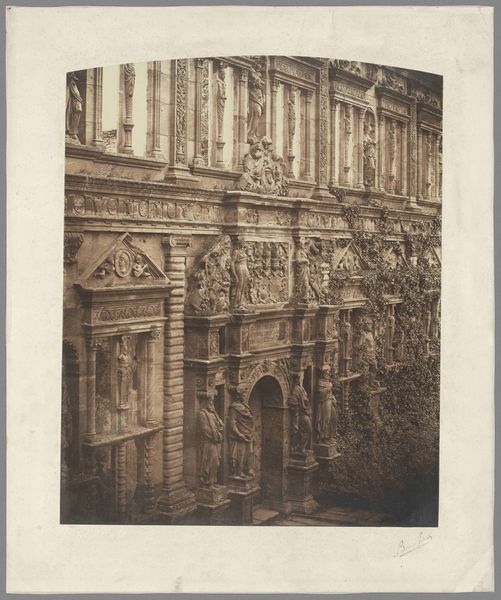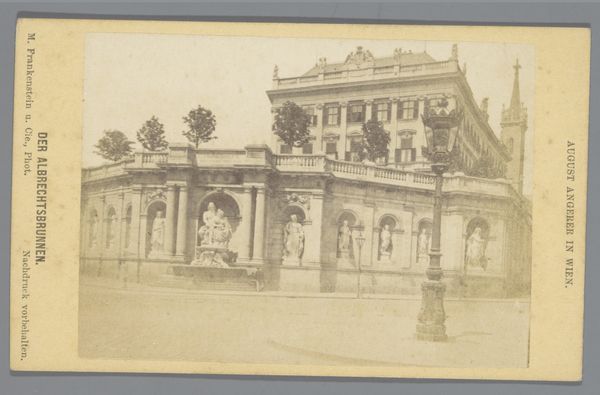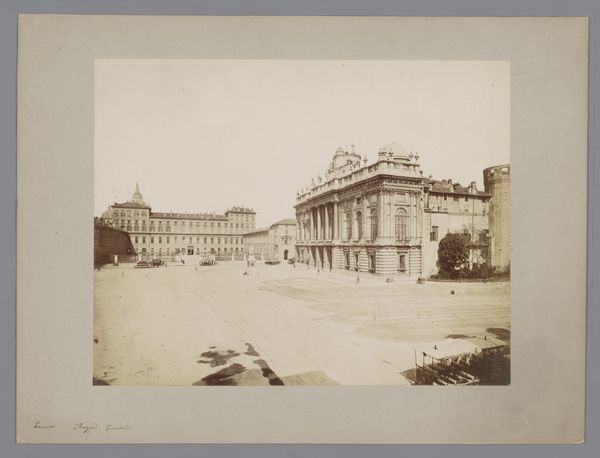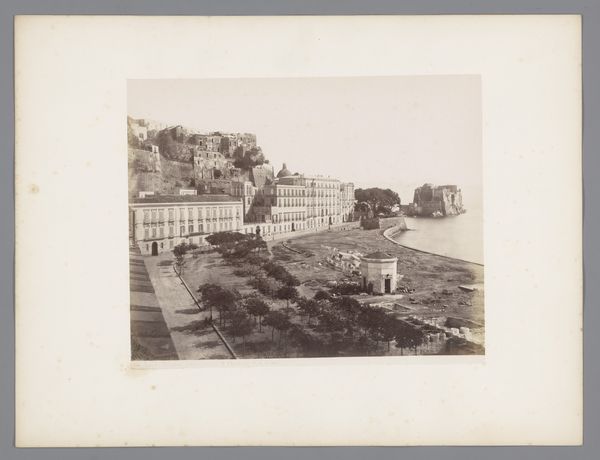
Verwoestingen aan het Louvre , Pavillon de Flore ten tijde van de Commune, met de Seine op de voorgrond 1871
0:00
0:00
print, photography, gelatin-silver-print
# print
#
photography
#
gelatin-silver-print
#
cityscape
#
history-painting
#
realism
Dimensions: height 369 mm, width 510 mm, height 196 mm, width 252 mm
Copyright: Rijks Museum: Open Domain
Charles Soulier captured this photograph, showcasing the ravaged Louvre and the Pavillon de Flore, during the tumultuous time of the Commune. Here, the Seine flows in the foreground as a silent witness. The ruin of the architecture carries echoes of destruction throughout history, linking back to the sack of Rome and forward to the bombings of the World Wars. This devastation is mirrored in countless artistic depictions across time. Consider the motif of broken structures, found in Piranesi's etchings of Roman ruins, symbols of lost grandeur and the inexorable passage of time. In this image of the Louvre, we see more than mere physical damage. The ravaged architecture becomes a potent symbol of societal collapse and the fragility of civilization itself. It evokes a deep, subconscious unease, a collective memory of destruction and loss that resonates across generations. Ultimately, this image is a testament to the cyclical nature of history, where destruction and renewal constantly intertwine. The ruins, though stark and sobering, hint at the possibility of rebirth and reconstruction, reflecting the enduring human spirit.
Comments
No comments
Be the first to comment and join the conversation on the ultimate creative platform.
